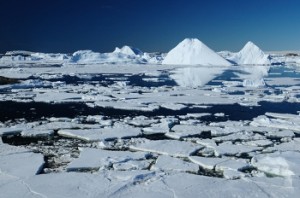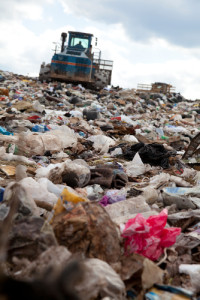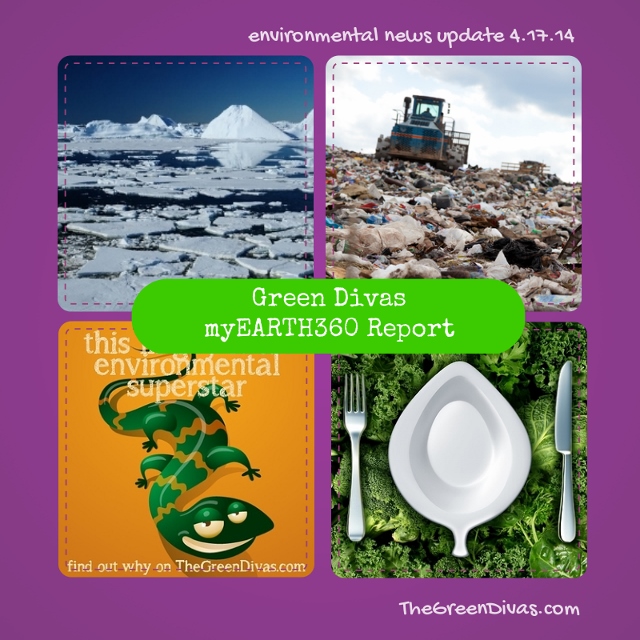Want to know wassup in environmental news?
From ozone holes to environmental superheroes in unlikely places, we’ve got you covered.
Listen to Green Diva Meg and I talk about the latest environmental headlines on the latest Green Divas myEARTH360 Report. Never a dull moment!
WTF news…
The comings and goings of ozone holes.
Apparently the Arctic’s ozone hole is looking pretty good, thanks to the worldwide ban on ozone depleting chemicals. That’s good news! But… there’s still the hole in Antarctica. Oh, and I should mention that researchers recently discovered a new, naturally occuring hole in the atmosphere above part of the western Pacific Ocean. WTF?! Does that mean that the increasing crap we put into the atmosphere will have even more of an impact on us? They’re not sure yet. But what they do know is that this newly discovered area has hardly any of the chemicals that scrub pollutants from the air. Hole-y environmental disaster waiting to happen? Let’s hope not. Read more about the newly discovered ozone hole…
 Greenland’s ice cap… not so glacial
Greenland’s ice cap… not so glacial
Greenland’s ice cap is becoming unstable. Yep. It’s melting faster than anyone had guessed. And, being the largest land mass of ice in the Northern Hemisphere, this could be problematic. Apparently it was stable until around 2003 when the ice melt started moving faster than glacial pace. Scientists say that between April 2003 and April 2012, the region was losing ice at the rate of 10 billion tons a year. WTF?! Read more about it…
Surge in deaths of environmental activists over past decade, report finds
The killing of activists protecting land rights and the environment has surged over the past decade, with nearly three times as many deaths in 2012 than 10 years previously, a new report has found.
Deadly Environment, an investigation by London-based Global Witness documents 147 recorded deaths in 2012, compared to 51 in 2002. Between 2002 and 2013, at least 908 activists were killed in 35 countries – with only 10 convictions. The death rate has risen in the past four years to an average of two activists a week, according to the report, which also documents 17 forced disappearances, all of whom are presumed dead. Read more..
 Encouraging (yet somewhat WTF) news…
Encouraging (yet somewhat WTF) news…
Salamanders may save the day (or at least help, as long as we don’t drive them into extinction first)!
Tiny salamanders can literally gobble up carbon. Who knew? They eat insects that would otherwise release carbon dioxide. And they also chew up methane releasing leaf litter! They may not be able to keep up with the nearly 40 billion tons of CO2 that humans put out annually, but one tiny salamander can sequester about 178 pounds of carbon per acre during a rainy season.
Fortunately, woodland salamanders can be found all over the world so these adorable little critters could definitely prove to be environmental superstars. More reason to keep trees and salamanders safe from destruction. (And hope for rain!) Read more…
Plain ol’ encouraging news…
 130+ Universities Join Movement to Measure Sustainable Dining on Campus
130+ Universities Join Movement to Measure Sustainable Dining on Campus
As millions of students receive their college acceptance letters this month and prepare to make one of the biggest decisions of their lives, Real Food Challenge is proud to announce that 134 colleges and universities are now participating in a national, student-designed program—called The Real Food Calculator—to measure and report sustainable food in campus dining.
While quality of cafeteria food has long been a factor in students’ perceptions of campus life, a majority now include a concern for institutional sustainability as a factor in college decisions. “Increasingly we’re finding businesses that understand millennials’ desire for transparency, authenticity and honesty in marketing—especially when it comes to food,” explains Anim Steel, executive director of Real Food Generation, the program’s sponsor. “What’s missing are concrete tools and hard numbers to help institutions keep up with an evolving customer base. The Real Food Calculator fills that gap.” Read more…
 How Clean Energy and Waste Management turn trash into green fuel
How Clean Energy and Waste Management turn trash into green fuel
Modern society makes a lot of garbage. The decomposition of organic material from garbage in landfills releases methane gas, a potent global warming pollutant. At the same time, the modern transportation system is powered mostly by fossil fuels and also releases global warming and toxic air pollution. Today, two California companies are turning rotting lemons (garbage) into lemonade (low carbon fuels for cars and trucks), and are showing that AB 32 creates a powerful incentive for new ideas and innovations.
Although the ultimate solution to the problem of waste generation and pollution from landfills must include reduction of waste going into the landfills, the fact is landfills aren’t going anywhere any time soon.
Many landfills combust methane from their garbage in onsite flares or engines, or vent it through carbon absorption systems. This release of combusted methane adds to the negative public health and climate impacts of the sites. Clean Energy and Waste Management Inc. are looking to change traditional management of landfill gas, deploying an innovation that can help reduce pollution from the transportation sector and lead to reduced landfill emissions. Read more…
Take Action!
Electricity plants running on coal produce more than a quarter of US carbon pollution. Right now, there are absolutely no limits on carbon pollution. That’s plain wrong. The only way to slow global warming is to cut down greenhouse gas emissions. Fortunately, the EPA has proposed new rules that would place limits on carbon pollution from power plants.
Click here to tell the EPA you support the new limits on carbon pollution from power plants.

Green Diva Meg
April 17, 2014 at 2:30 pm
love this one. love those salamanders!
Green Diva Lynn
April 17, 2014 at 2:42 pm
Thanks, Meg! Always a fun convo with you!
Pingback: Top Environmental News: From Antarctica Meltdown to Pollution Sucking Billboard. - myEARTH360 (the blog)